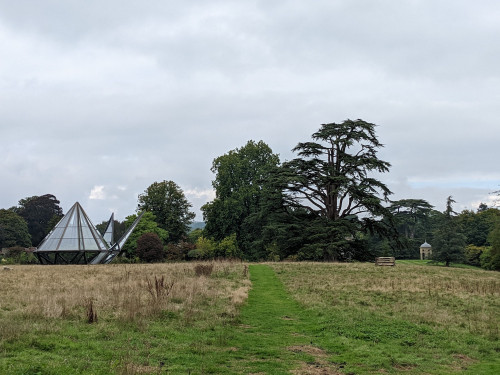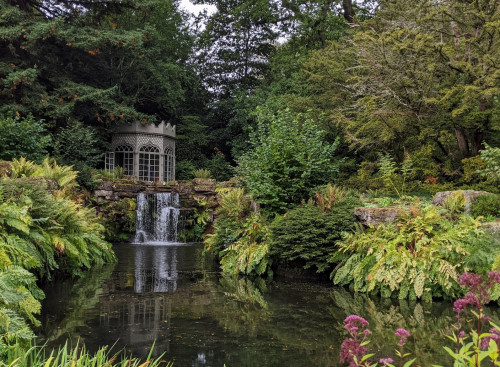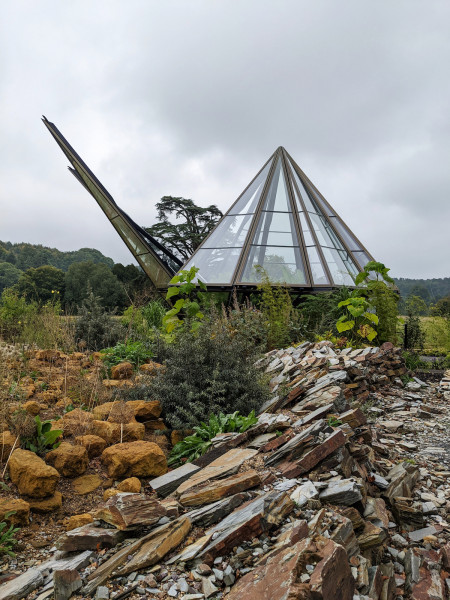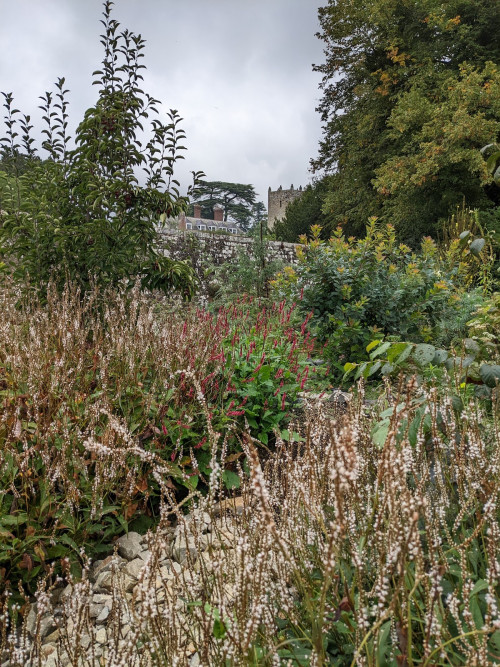Woolbeding Gardens
24 October 2022 by Chris Kempster
Old browser alert! We have detected you are using a pretty old browser. This website uses cool features that can't be supported by your browser.
If we let you see the website it would look all weird and broken, nobody wants that!
Update your browser!24 October 2022 by Chris Kempster

After a busy summer and a new member joining the team, what better time to swap pens for boots and take a practice trip to the local National Trust Woolbeding Gardens for a morning of inspiration and fresh air.
Located just a few miles from Midhurst, we opted to take the complimentary minibus shuttle which gave us time to take in the beauty of the West Sussex countryside along the way.
Woolbeding is a horticultural haven bursting with colourful planting, a contemporary glasshouse, architectural follies, historical artefacts and countryside views, providing the perfect environment for exploring.

Originally owned by the Lascelles Family, the Grade I listed Georgian house and gardens sit on the former estate where they merge into the landscape of the River Rother. The estate was later made over to the National Trust in the late 1950s, where from 1972 it has been leased to Simon Sainsbury. With his partner Stewart Grimshaw, they restored the 17th century house and worked with contemporary designers and craftsmen to create the elegant country retreat seen today.
One of our favourite take-aways was the playfulness the two owners have toward the new garden features; the garden’s historian explained that everything here is in pairs – one for each of the owners – whether this is the Roman sarcophagus or one of the more contemporary features, there are always two. One clue, the styles often follow their owner’s interest and differ wildly between contemporary and classic. Why not have a go at seeing how many pairings you can find.

Whilst some of the features seen at Woolbeding today trace their plans back to earlier periods in the garden's history, the garden itself came into its prime during the mid to late twentieth century. The garden consists of two distinct sections: the area closest to the house being arranged in a series of formal garden rooms and the second section has been designed as a less formal Pleasure Ground.
The Pleasure ground area was developed over a ten-year period in the early 2000s to become an ideal environment for exploring, full of unique architectural structures that blend harmoniously into the surrounding rock and water. Handing over more to varying depths of vegetation, mature conifers and dark, damp stone, the vibrant punctuation of colour here, such as the Chinese bridge over the lily pond, really grab the eye and bring your focus back to the garden.
In addition to the care provided by the National Trust, it is refreshing to see and feel a collection of gardens which have been guided and sensitively adapted by both its current guardians and the times in which they sit. A sense of whimsical folly, albeit tasteful and elegant, pepper-pot the gardens in both planted and built form. Adding a sense of playfulness and added interest, this helps to break down the boundaries sometimes presented by a more formal garden. Now that may not be entirely true, but it certainly helped a less-experienced ‘garden goer’ such as me a pleasant way in.




Being architects, we’d be lying if we said that a part of the garden’s intrigue wasn’t down to the recently completed Glasshouse – a giant ten-sided kinetic glass and aluminium terrarium designed by Heatherwick Studio – which sits at the end of the Silk Route Garden.
Opening up during the hotter summer days, this unfolding structure provides the focal point to a new garden that reveals how much the ancient Silk Route has influenced English gardens of today. Perhaps slightly less dramatic, but in a way just as picturesque, we visited on a crisp and sunny, yet damp morning. As such the ‘sepals’ remained closed (for the most part) presenting a structure more akin to a futuristic fairy-tale palace sitting within its misty magical field than as a feat of engineering. Get up close and the 100 tonne rams which operate the moving heraldic spikes give you an idea of how impressive the design and engineering behind the aesthetic form really are.
The Silk Route Garden itself is striking, inviting visitors on a 12-step meandering journey through a landscape influenced by the ancient trading route between Asia and Europe where commodities such as the eponymous silk were exchanged and along which many plants species were brought back to Britain for the first time, such as rosemary, lavender and fennel. The twelve distinct regions are visually expressed by the change in tone and texture of the gritty, stony landscape in which the 300+ species reside.

If you’re in the mood for testing your flora knowledge (this turned into a natural, albeit gentle competition between us) or possibly in the market for some beautiful new ‘unknown’ plants, the Garden Team offer a great info service too – just take a photo and email it to the team!
Although in its early days within the gardens, the Silk Route and Glasshouse offer a striking and exciting contemporary addition to the gardens and really ground themselves within the theme of the estate. And although a few gaps may be seen here and there at present, we’re sure these will recede over the next season, providing an ever-richer experience as the Glasshouse comes into and out of view as one walks through the planted beds and borders.

With plenty more horticultural and architectural gems dotted around the gardens, including a Gothic summer house, hermits lodge, hornbeam tunnel and the All Hallows Church, we think it’s definitely worth a visit.
The bad news is that the gardens are unfortunately now closed for the season, but keep an eye on the National Trust website for information for the 2023 spring opening times and what’s on throughout next year - just remember to pre book your tickets before you go.
If you do visit Woolbeding do get in touch to let us know your highlights, we’d love to know.